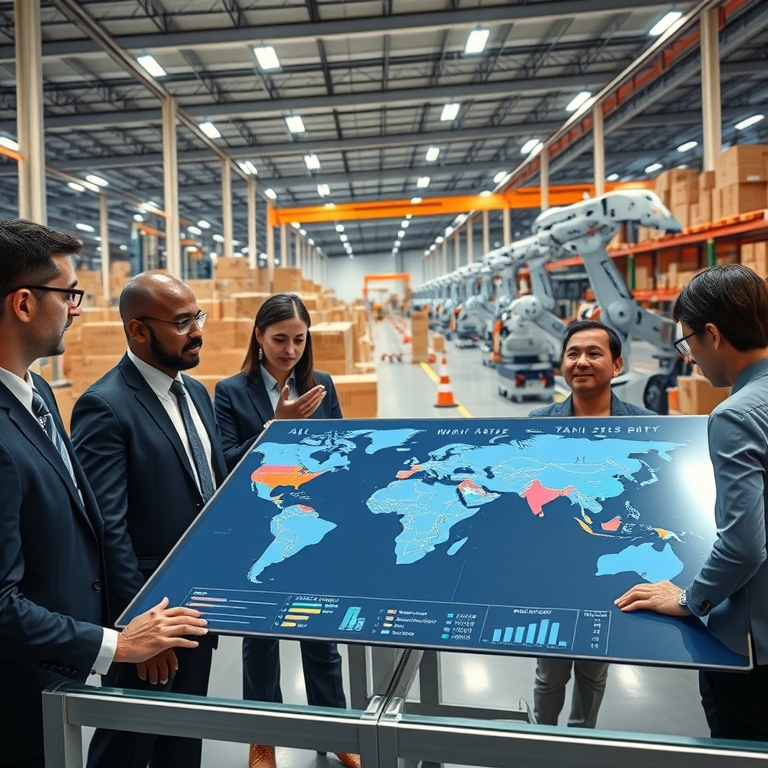In the dynamic landscape of global trade, Amazon, the e-commerce behemoth, stands as a sentinel against the uncertainty spawned by international tariffs. As economies around the world grapple with shifting trade policies, Amazon has been meticulously monitoring the impact of these tariffs, ensuring its supply chain remains resilient and customer pricing stays competitive. The company’s approach underscores a strategic balancing act between absorbing costs and maintaining operational efficiency, a challenge that has become increasingly complex in the face of escalating trade tensions.
Tariffs, essentially taxes imposed on imported goods, have been a tool wielded by governments to protect local industries and exert political pressure. However, their ripple effects can disrupt global supply chains, affecting everything from raw material costs to the final price tag on consumer goods. For Amazon, whose vast network spans continents and involves countless suppliers, the stakes are particularly high. A sudden increase in tariffs can lead to higher costs for goods, which, if not managed adeptly, could erode profit margins or necessitate price hikes that alienate cost-conscious consumers.
Recognizing these risks, Amazon has adopted a proactive stance. The company employs a sophisticated system of analytics and forecasting to gauge the potential impact of tariffs on its operations. This involves leveraging big data to track changes in trade policies and simulate their effects on supply chain costs. By doing so, Amazon can make informed decisions about where to source products, how to structure its logistics, and when to negotiate with suppliers to mitigate cost increases.
At the heart of Amazon’s strategy is a commitment to agility and diversification. The company has been expanding its network of suppliers to ensure redundancy and flexibility. By sourcing products from multiple vendors across different regions, Amazon can pivot quickly if tariffs make certain trade routes or markets less viable. This diversification not only mitigates risk but also enhances the company’s bargaining power, allowing it to secure more favorable terms and conditions from suppliers.
Additionally, Amazon has been investing heavily in technology and infrastructure to streamline its supply chain operations. Automation and artificial intelligence are being harnessed to optimize inventory management, enhance order fulfillment, and reduce lead times. Such investments are critical in offsetting the financial burden imposed by tariffs, as they enable Amazon to maintain or even improve efficiency in the face of rising costs.
While supply chain management is a significant focus, Amazon is equally attentive to its pricing strategy. The company is acutely aware that any increase in product prices could jeopardize its competitive edge. To this end, Amazon has been exploring various pricing models and discount strategies to absorb the impact of tariffs without passing the burden onto consumers. Dynamic pricing, for example, allows Amazon to adjust prices in real-time based on demand, competition, and inventory levels. This approach not only helps sustain sales volumes but also maximizes revenue within the constraints of fluctuating costs.
Moreover, Amazon’s vast array of private-label products provides another buffer against tariff-induced price increases. By controlling the production and supply of these products, Amazon can more effectively manage costs and pricing. This control extends from raw material sourcing to manufacturing and distribution, enabling Amazon to offer competitive prices even when external factors drive up costs.
Beyond its internal strategies, Amazon is also engaging with policymakers and industry stakeholders to advocate for more predictable and stable trade environments. The company participates in trade associations and collaborates with governments to underscore the importance of free trade and the detrimental effects of protectionist policies. By fostering dialogue and cooperation, Amazon seeks to influence policy decisions that could alleviate some of the pressures imposed by tariffs on global commerce.
The company’s efforts to navigate the complexities of tariffs exemplify its broader commitment to innovation and resilience. Amazon’s ability to adapt to external challenges has been a hallmark of its success, enabling it to sustain growth and maintain its position as a market leader. As the global trade landscape continues to evolve, Amazon’s vigilance and strategic foresight will be crucial in safeguarding its supply chain and pricing integrity.
In conclusion, Amazon’s approach to managing tariff impacts reflects a sophisticated blend of technology, strategy, and diplomacy. By continuously monitoring trade policies, diversifying its supply chain, investing in technological innovations, and engaging in proactive pricing strategies, Amazon is well-positioned to weather the storms of global trade uncertainty. The company’s efforts not only protect its own interests but also serve as a blueprint for other businesses facing similar challenges. As tariffs and trade tensions remain a fixture of the global economy, Amazon’s strategic initiatives will undoubtedly continue to play a pivotal role in shaping the future of e-commerce and international trade.





